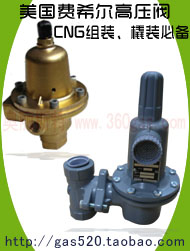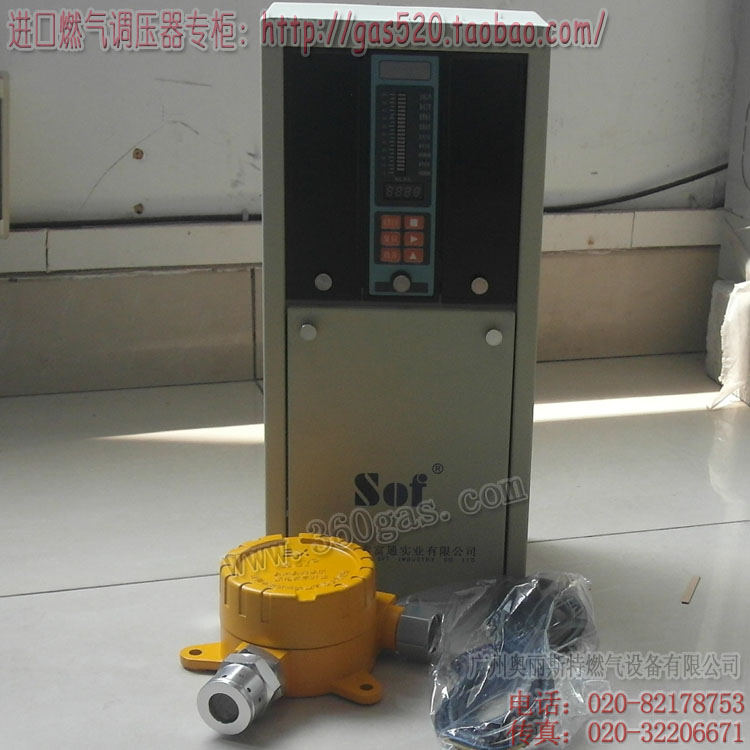位置:首页 > 燃气资讯 > U.S. Guide Highlig
U.S. Guide Highlights Emerging Sustainable Transportation Fuel
浏览次数 796 , 日期 2013-11-01 , 燃气设备 加入收藏
Provides a roadmap for cities, towns and other waste generators on how to convert their local organic wastes into “Renewable Natural Gas”
Turning Waste into Vehicle Fuel: Renewable Natural Gas; A Step-by-Step Guide for Communities, is a first-of-a-kind roadmap, funded by the U.S. Department of Energy, laying out the many considerations that go into assessing the viability of local waste-to-fuel initiatives—from organizational, economic, technological, and government policy perspectives.
Renewable Natural Gas (RNG) made from organic waste, an emerging sustainable fuel option, can be produced using proven technologies. This fuel can contribute significantly to addressing this country’s most pressing energy independence, waste management, climate change, and job creation challenges, according to the new comprehensive guide produced by the national non-profit organization Energy Vision.
According to Energy Vision President Joanna D. Underwood, “Cities, communities, agricultural operations and other generators of organic waste, large and small, now have access to practical, easy-to-understand guidance in exploring the prospects for using what they have long considered just an expensive waste burden to make a low-carbon, locally produced and fully sustainable vehicle fuel. While no two projects are quite the same, the steps for assessing the possibilities remain unchanged. Turning our waste into a clean fuel solution is a winning strategy, and one that many can now consider with the help of our Guide.” For the full report or to order a hard copy, visit: www.energyvision.com/publications/RNGGuide.
Both RNG and fossil natural gas can help communities meet their carbon emissions reductions goals, but RNG does so even more effectively. While fossil natural gas can reduce vehicle carbon dioxide (CO2) emissions by 20 to 25 percent compared to diesel fuel, RNG can reduce the carbon footprint of diesel by 88 percent or more. It is the lowest of all low-carbon fuels available for transportation, according to the life-cycle analyses of the California Air Resources Board and Argonne National Laboratory. (See p. 6)
Municipalities Can Play a Leading Role
The Guide lays out six steps that cities, communities and other owners and generators of waste can take to assess the potential for producing renewable natural gas in their regions (See p. 57). These steps range from quantifying the organic wastes generated, to determining what local vehicle fleets are best suited and able to utilize this fuel, to finding the partners and raising the funds to launch renewable natural gas projects.
By processing locally-generated organic wastes – from dairy manure to residential food scraps – cities, towns and other waste generators can create near-carbon-neutral and fully sustainable renewable natural gas which can power light, medium and heavy duty vehicles. In doing so, organic materials, burdensome and costly to dispose of, become energy feedstocks for local clean fuel production. Through the production and use of RNG, companies and communities alike are realizing fuel and waste disposal cost savings, as well as creating new, permanent green jobs.
Turning Garbage into “Gold”
Close to 250 million tons of municipal waste flow out of U.S. cities and communities each year – and almost one-third of this is “organics,” primarily food and yard waste. Millions of additional tons are produced by other institutions such as universities and hospitals, by food processors and by agricultural operations. All of these wastes, as they decompose, produce a potent stream of climate-changing biogases (primarily methane and carbon dioxide). These biogases can be extracted from landfills or sewage treatment plants, or from “anaerobic digesters” – special tanks in which separated organics can be processed. The latter provides an added benefit; after the gases are removed, the remaining bio-solids can be used as soil amendments.
Existing technologies, which collect and refine the biogases from this waste stream, can remove impurities to create renewable natural gas for local fleets of buses, trucks, and cars. This fuel can displace up to 25% or more of all the diesel fuel used today. That would be enough to power every urban refuse truck and bus fleet in the country. For almost all such fleets, sophisticated natural gas engines are now a commercial choice.
This new fuel is just like fossil natural gas but better: It requires no drilling; the feedstock for producing it is domestic, abundant and endless; it generates virtually no soot particles when burned, and on a lifecycle basis (considering production, transport and use) while fossil natural gas reduces greenhouse gas emissions compared to diesel by 20 to 30%, RNG is close to carbon neutral. Joanna Underwood, Energy Vision President and co-author of the Guide contends, “Producing renewable natural gas (RNG) turns tons of costly heavy wastes into ‘gold’. And for the millions of Americans that recognize the many environmental and climate change benefits of using domestic natural gas as a vehicle fuel, but who have major concerns about the impacts of “fracking”, renewable natural gas is an all-out winner with even greater environmental benefits and none of the drilling risks.”
Putting RNG on the Map
From Sacramento, CA to Fair Oaks, IN and Janesville, WI, cities, communities, farms and other generators of organic wastes, often working in public-private partnerships, are beginning to produce renewable natural gas to fuel fleet vehicles. Six projects of varying size and waste feedstock are profiled in the Guide (pp. 39-45). Some examples:
• In Sacramento, Atlas Disposal Services, CleanWorld, BioCNG, LLC and Clean Energy Fuels, joined forces in developing the first U.S. project to collect and process commercial and residential food waste to produce RNG for local municipal and refuse vehicles, powered by Cummins Westport’s natural gas engines.
• In Fair Oaks, IN, AMP Americas and Fair Oaks Farms convert liquid manure from more than 11,500 dairy cows into enough energy and fuel to power the entire farm as well as a 42-truck milk delivery fleet, powered by Cummins Westport’s 8.9-liter and new 12-liter engines. By utilizing one cow product (manure), the trucks transport another cow product (more than 300,000 gallons of raw milk daily) to processing facilities in Michigan, Tennessee and Kentucky.
• In Janesville, WI, a portion of the biogas produced at the local wastewater treatment facility is upgraded to vehicle fuel to power municipal vehicles, reducing their carbon footprint and saving tax dollars.
Creating Sustainable Cities and Communities
More than 80 percent of the 312 million people living in the U.S. reside in urban areas (characterized by more than 50,000 residents). And globally, nearly 70 percent of greenhouse gas emissions originate in urban areas, of which close to 75 percent can be attributed to municipal governments, from vehicle fleets to wastewater facilities.
“Therefore,” says Guide co-author Matt Tomich, “sustainability has become a top priority for cities and communities, where space and resources are limited and practical solutions can achieve measurable results. Turning waste into vehicle fuel is one option that can and should be explored.”
“Despite the current impasse in Washington, some federal and state incentives are in place to promote renewable fuel production and the construction of new refueling infrastructure. While stronger governmental measures would accelerate the pace of change, it is the local communities struggling with local air pollution, waste disposal and greenhouse gas challenges that must emerge as the ‘game-changers’,” adds Underwood. “They have the most to gain as far as economic and environmental benefits go, and a growing number of companies and consultants, working with them, are beginning to make a true waste-to-fuel revolution in this country a reality. We expect many others, with the help of Energy Vision’s new Guide, to follow the pioneering leaders.”
Turning Waste into Vehicle Fuel: Renewable Natural Gas; A Step-by-Step Guide for Communities, is a first-of-a-kind roadmap, funded by the U.S. Department of Energy, laying out the many considerations that go into assessing the viability of local waste-to-fuel initiatives—from organizational, economic, technological, and government policy perspectives.
Renewable Natural Gas (RNG) made from organic waste, an emerging sustainable fuel option, can be produced using proven technologies. This fuel can contribute significantly to addressing this country’s most pressing energy independence, waste management, climate change, and job creation challenges, according to the new comprehensive guide produced by the national non-profit organization Energy Vision.
According to Energy Vision President Joanna D. Underwood, “Cities, communities, agricultural operations and other generators of organic waste, large and small, now have access to practical, easy-to-understand guidance in exploring the prospects for using what they have long considered just an expensive waste burden to make a low-carbon, locally produced and fully sustainable vehicle fuel. While no two projects are quite the same, the steps for assessing the possibilities remain unchanged. Turning our waste into a clean fuel solution is a winning strategy, and one that many can now consider with the help of our Guide.” For the full report or to order a hard copy, visit: www.energyvision.com/publications/RNGGuide.
Both RNG and fossil natural gas can help communities meet their carbon emissions reductions goals, but RNG does so even more effectively. While fossil natural gas can reduce vehicle carbon dioxide (CO2) emissions by 20 to 25 percent compared to diesel fuel, RNG can reduce the carbon footprint of diesel by 88 percent or more. It is the lowest of all low-carbon fuels available for transportation, according to the life-cycle analyses of the California Air Resources Board and Argonne National Laboratory. (See p. 6)
Municipalities Can Play a Leading Role
The Guide lays out six steps that cities, communities and other owners and generators of waste can take to assess the potential for producing renewable natural gas in their regions (See p. 57). These steps range from quantifying the organic wastes generated, to determining what local vehicle fleets are best suited and able to utilize this fuel, to finding the partners and raising the funds to launch renewable natural gas projects.
By processing locally-generated organic wastes – from dairy manure to residential food scraps – cities, towns and other waste generators can create near-carbon-neutral and fully sustainable renewable natural gas which can power light, medium and heavy duty vehicles. In doing so, organic materials, burdensome and costly to dispose of, become energy feedstocks for local clean fuel production. Through the production and use of RNG, companies and communities alike are realizing fuel and waste disposal cost savings, as well as creating new, permanent green jobs.
Turning Garbage into “Gold”
Close to 250 million tons of municipal waste flow out of U.S. cities and communities each year – and almost one-third of this is “organics,” primarily food and yard waste. Millions of additional tons are produced by other institutions such as universities and hospitals, by food processors and by agricultural operations. All of these wastes, as they decompose, produce a potent stream of climate-changing biogases (primarily methane and carbon dioxide). These biogases can be extracted from landfills or sewage treatment plants, or from “anaerobic digesters” – special tanks in which separated organics can be processed. The latter provides an added benefit; after the gases are removed, the remaining bio-solids can be used as soil amendments.
Existing technologies, which collect and refine the biogases from this waste stream, can remove impurities to create renewable natural gas for local fleets of buses, trucks, and cars. This fuel can displace up to 25% or more of all the diesel fuel used today. That would be enough to power every urban refuse truck and bus fleet in the country. For almost all such fleets, sophisticated natural gas engines are now a commercial choice.
This new fuel is just like fossil natural gas but better: It requires no drilling; the feedstock for producing it is domestic, abundant and endless; it generates virtually no soot particles when burned, and on a lifecycle basis (considering production, transport and use) while fossil natural gas reduces greenhouse gas emissions compared to diesel by 20 to 30%, RNG is close to carbon neutral. Joanna Underwood, Energy Vision President and co-author of the Guide contends, “Producing renewable natural gas (RNG) turns tons of costly heavy wastes into ‘gold’. And for the millions of Americans that recognize the many environmental and climate change benefits of using domestic natural gas as a vehicle fuel, but who have major concerns about the impacts of “fracking”, renewable natural gas is an all-out winner with even greater environmental benefits and none of the drilling risks.”
Putting RNG on the Map
From Sacramento, CA to Fair Oaks, IN and Janesville, WI, cities, communities, farms and other generators of organic wastes, often working in public-private partnerships, are beginning to produce renewable natural gas to fuel fleet vehicles. Six projects of varying size and waste feedstock are profiled in the Guide (pp. 39-45). Some examples:
• In Sacramento, Atlas Disposal Services, CleanWorld, BioCNG, LLC and Clean Energy Fuels, joined forces in developing the first U.S. project to collect and process commercial and residential food waste to produce RNG for local municipal and refuse vehicles, powered by Cummins Westport’s natural gas engines.
• In Fair Oaks, IN, AMP Americas and Fair Oaks Farms convert liquid manure from more than 11,500 dairy cows into enough energy and fuel to power the entire farm as well as a 42-truck milk delivery fleet, powered by Cummins Westport’s 8.9-liter and new 12-liter engines. By utilizing one cow product (manure), the trucks transport another cow product (more than 300,000 gallons of raw milk daily) to processing facilities in Michigan, Tennessee and Kentucky.
• In Janesville, WI, a portion of the biogas produced at the local wastewater treatment facility is upgraded to vehicle fuel to power municipal vehicles, reducing their carbon footprint and saving tax dollars.
Creating Sustainable Cities and Communities
More than 80 percent of the 312 million people living in the U.S. reside in urban areas (characterized by more than 50,000 residents). And globally, nearly 70 percent of greenhouse gas emissions originate in urban areas, of which close to 75 percent can be attributed to municipal governments, from vehicle fleets to wastewater facilities.
“Therefore,” says Guide co-author Matt Tomich, “sustainability has become a top priority for cities and communities, where space and resources are limited and practical solutions can achieve measurable results. Turning waste into vehicle fuel is one option that can and should be explored.”
“Despite the current impasse in Washington, some federal and state incentives are in place to promote renewable fuel production and the construction of new refueling infrastructure. While stronger governmental measures would accelerate the pace of change, it is the local communities struggling with local air pollution, waste disposal and greenhouse gas challenges that must emerge as the ‘game-changers’,” adds Underwood. “They have the most to gain as far as economic and environmental benefits go, and a growing number of companies and consultants, working with them, are beginning to make a true waste-to-fuel revolution in this country a reality. We expect many others, with the help of Energy Vision’s new Guide, to follow the pioneering leaders.”








